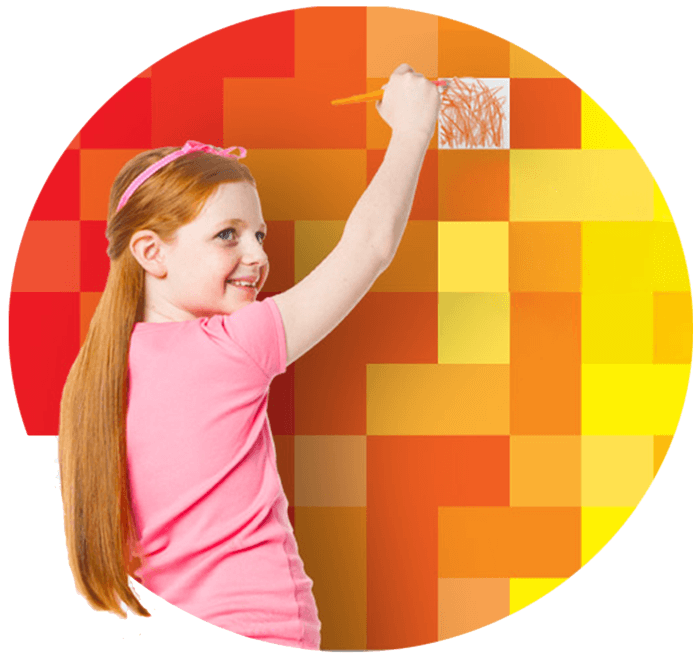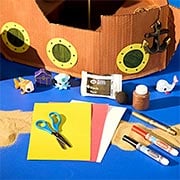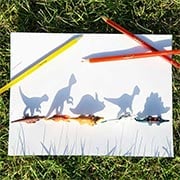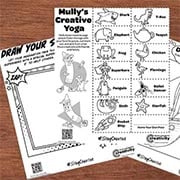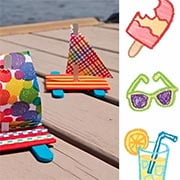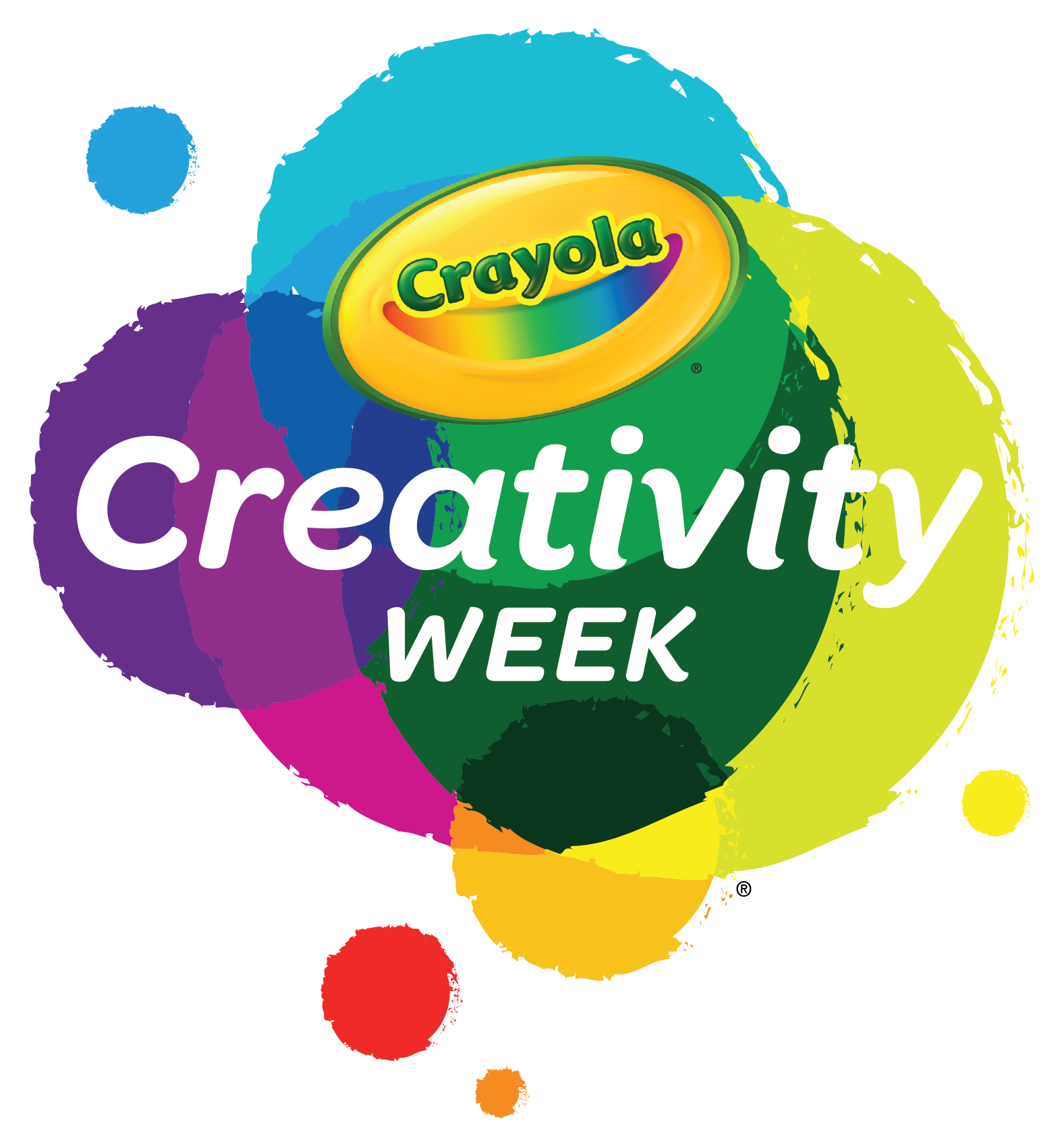While we love finding new ways to create with our modeling compounds, at Crayola, the safety of our artists is our top priority.
Crayola modeling compounds are not meant to be made into candlesticks or similar items that would come in contact with open flames and high heat sources. For that reason, we do not recommend using Crayola modeling compounds, wet or dry, near an open flame, in an oven, microwave, or kiln. Exposure to high heat sources may cause drying out, cracking, and browning.
We are always here to help! Feel free to call or text us at 1-800-272-9652 on weekdays between 9 AM and 4 PM Eastern Time. If you would prefer to send us an email, visit our contact us page.
If you have additional questions, we would love to hear from you! Feel free to call or text us at 1-800-CRAYOLA weekdays between 9 AM and 4 PM Eastern Time. If you would prefer to send us an email, visit our contact us page.
Related Questions
Explore answers to common questions, helpful stain removal tips, and creative ideas for making the most of our art supplies and free resources!
-
Crayola® Modeling Clay is intentionally designed to retain its pliability, ensuring endless hours of creativity. It's not suitable for hardening, baking, or painting as it's formulated exclusively for molding and shaping. Embrace its versatility, with a range of assorted colors, for continuous artistic adventures!
Discover more about Crayola modeling compound options on the Crayola modeling compounds page.
Have questions? Our team is here to help. Call or text us at 1-800-Crayola or visit the Crayola Contact Us page to send an email.
-
Crayola® Air-Dry Clay
- This clay gradually hardens into a durable solid over time, gaining strength. Explore various crafts using Crayola Air-Dry Clay at Crayola.com.
Crayola Model Magic®
- An air-drying modeling compound, Crayola Model Magic remains lightweight and retains some flexibility even after drying. Discover fun crafts with Crayola Model Magic at Crayola.com.
Crayola No-Bake Sculpting Clay
- No Bake Sculpting Clay dries fully within 72 hours, is silky smooth and blendable, retains high detail, adheres to various surfaces and can be used in multiple ways (rolling, stamping, etc.)
Crayola Modeling Clay- Unlike Air-Dry Clay and Model Magic, this is a non-drying modeling compound, allowing for sculpting, squishing, and reuse for endless creative enjoyment.
Curious about our collection?Discover our vibrant range of modeling compounds at Crayola.com.Got Questions?We're here for you! Call or text us at 1-800-272-9652 on weekdays between 9 AM and 4 PM Eastern Time. Text charges may apply. If you prefer, visit our contact us page to send us an email. -
Crayola® Markers are made with six components consisting of: a color solution, a porous plastic nib, a plastic barrel, a cotton filament (ink reservoir), an end plug, and a cap. Although specific ingredient information is proprietary, most of the color solutions in Crayola Markers are made from water and dyes. Below is the process we follow to make Crayola Markers.
- Tiny beads of plastic are fed into a molding machine where they are melted and then molded into marker barrels. The liquid plastic becomes solid, white marker barrels in a matter of seconds.
- Any extra plastic from the molding process goes back into the molding machine to make new marker barrels.
- The marker barrels are screen printed with the Crayola brand name and most with the color name of the marker. The process is like screen printing t-shirts, where the ink colors pass through a pre-made screen onto the printing surface. Up to 6 distinct colors can be used to decorate the marker barrel at one time! The ink dries quickly as the marker barrel passes through a drying tunnel.
- The assembly machine lines up the marker barrels in the same direction as they move along a conveyor belt. The end plug and ink reservoir are inserted into the marker barrel, and the color solution is injected into the soft reservoir. The marker nib, or drawing tip, is added to the open end of the marker, followed by the cap. It takes a minute or two for the ink to travel up from the reservoir to color the nib, so the marker is ready to write!
- The finished markers are placed in a sorter - a machine with separate sections for the assorted colors. A chute drops one marker of each color onto a conveyor belt, creating the colorful assortment that will fill the marker box.
- A robotic arm opens the flat marker boxes and sends them down the conveyor belt. Another robotic arm pushes the markers into the boxes and closes them. After the assembled markers are packed in large cartons, they are ready to be shipped to stores.
Did you know....
Crayola makes more than 700 million markers a year!
- The first box of Crayola Markers was introduced in 1978 and included 8 bright colors.
- In 2014, Crayola introduced Ultra-Clean Washable Markers. They clean up easily from skin, clothing, and painted walls.
- Crayola Broad Line Markers are tested to write a minimum of 300 feet - almost the length of a football field!
- Crayola Fine Line and Super Tips Markers are tested to write a minimum of 600 feet.
Learn more about Crayola Markers on the Crayola Markers Page.
-
Introduced in 1998, Crayola® offers a variety of colored pencil assortments that are the essential creative tool for kids or the art enthusiast. Crayola colored pencils are manufactured in Brazil, Costa Rica or Vietnam due to their high-volume manufacturing capabilities.
The process of making Crayola Colored Pencils begins in the forest. Seedlings, which are young trees, are planted in fields much like a farmer plants a crop. Seedling crops grow into trees which are eventually used to make wood casings for the pencils. After several years, the trees are harvested, cut into even lengths, stacked onto trucks and shipped to the sawmill. Then, a new crop of seedlings is planted to replace those which have been harvested.
At the sawmill, lumber arriving by the truckload is stacked in large piles and allowed to dry. Once dry, the lumber is fed into a bark stripping machine which removes all the bark from each piece of lumber. Next, the lumber goes through a series of milling machines which cuts the lumber into rectangular slats. These slats are about as long as a colored pencil and about three inches wide. The slats are the building blocks for the production of colored pencils.
The slats are then transported to the pencil making plant. Here they are fed into another milling machine which cuts small semicircular grooves at regular intervals down the length of each slat. These grooved slats are now ready to accept a colored pencil core.
To make a Crayola Colored Pencil core, you need four raw materials:
- Extenders - which make up the body of the lead.
- Binders - to hold the ingredients together.
- Pigment - which gives each type of colored pencil its unique color.
- Water – to mix all the ingredients.
First, the extenders, binders, pigments and water are placed in a large mixer which gently kneads them together into a uniform doughy substance. When the mixing is complete, the contents of the mixer are rolled into flat sheets. Finally, these sheets are machine-pressed into large, long solid cylinder shapes. These shapes are called cartridges.
Each cartridge, while still damp and pliable, is inserted into another machine called an extrusion press, where it is forced through a small tube. The tube has a diameter equal to that of a colored pencil core. As the long rope of wet colored core comes out, an automatic slicer cuts it into equal lengths approximately as long as a colored pencil. Since the leads are still quite moist, they must be dried in large ovens before they become hard enough to insert into the slats.
To assemble the pencils, half of the grooved slats are fed into a machine which carefully lays a colored pencil core into each groove. Then a layer of glue is applied, and a second grooved slat is placed on top of the slat holding the lead. Think of this as a pencil sandwich, with each slat acting like a piece of bread and the color cores acting like the filling.
These pencil sandwiches are then bound very tightly together and placed into storage to give the glue time to dry. Once the glue is dry, they are fed into another milling machine which cuts them into individual colored pencils. Depending on the design of colored pencils, they are cut into either round or hexagonal shapes.
Next, the pencils are fed into a machine to be painted with the same color paint as the colored core. The pencils run down a conveyor belt to allow the paint to dry. The painted pencils are then sent to a machine to be automatically sharpened.
Finally, brightly colored finished pencils are packed into boxes, which are shipped to neighborhood stores.
Crayola Colored Pencils are used by people of all ages for everything from crafts to professional artwork and school projects. Learn more about Crayola Colored Pencils products here.
-
Crayola-themed retail stores are located in Chandler, Arizona; Easton, Pennsylvania; Kansas City, Missouri; Minneapolis, Minnesota; Orlando, Florida; and Plano, Texas. Five of these stores are in our Crayola Experience attractions. Admission to the Crayola Experience is not required for shopping at the Crayola Store. The Kansas City store is under the ownership and operation of our parent company, Hallmark Cards Inc. For information about hours of operation and other details, please contact your nearest store.
- Crayola Store in Chandler, AZ: 602-581-5370
- Crayola Store in Easton, PA: 610-515-8000
- Crayola Store in Kansas City, MO: 816-274-7500
- Crayola Store in Minneapolis, MN: 952-851-5800
- Crayola Store in Orlando, FL: 407-757-1700
- Crayola Store in Plano, TX: 469-642-2901
To explore our vibrant array of products, visit Crayola.com.


